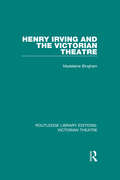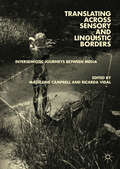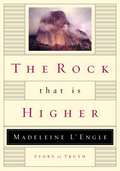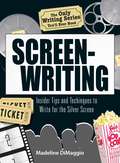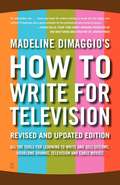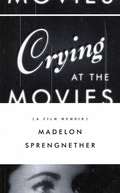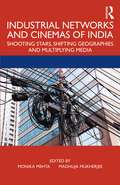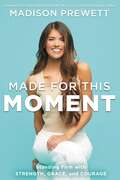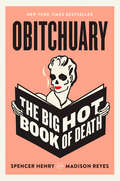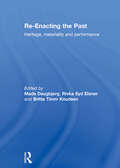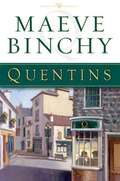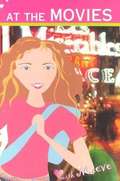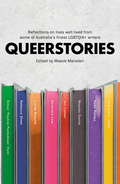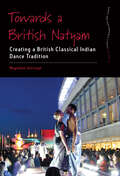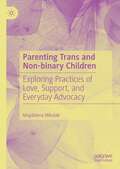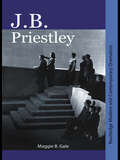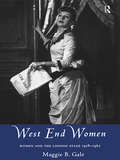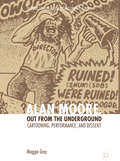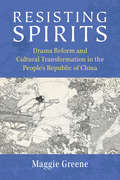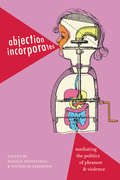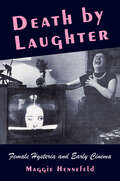- Table View
- List View
Henry Irving and The Victorian Theatre (Routledge Library Editions: Victorian Theatre #2)
by Madeleine BinghamOriginally published in 1978. Henry Irving achieved an astounding success in Britain and America as an actor; yet he lacked good looks, had spindly legs, and did not have a good voice. He said so himself. Today Irving is regarded as the archetype of the old-time actor, but in his own time he was regarded as a great theatrical innovator. Even Bernard Shaw, who attacked him pitilessly, even unto death, called him ‘modern’ when he first saw him act. Irving, the man, with his tenacious, obsessive talent, his human limitations and weaknesses, and his ephemeral glory is brought most sympathetically to life in this biography. It is written from contemporary sources, and from criticisms, lampoons, caricatures and gossip columns. If Irving reflected certain aspects of his age, this book underlines the Victorian ethic to which he appealed and the backcloths against which it was set – the extraordinary lavishness of the Lyceum productions and the incredible extravagance of social entertaining. Not the least absorbing aspect of this biography is the fascinating account of the long partnership between Irving and Ellen Terry, still in many respects an enigmatic one, but here portrayed with lively insight into character combined with understanding and deep knowledge of the social and theatrical context of the Victorian age.
Translating across Sensory and Linguistic Borders: Intersemiotic Journeys between Media
by Ricarda Vidal Madeleine CampbellThis book analyses intersemiotic translation, where the translator works across sign systems and cultural boundaries. Challenging Roman Jakobson’s seminal definitions, it examines how a poem may be expressed as dance, a short story as an olfactory experience, or a film as a painting. This emergent process opens up a myriad of synaesthetic possibilities for both translator and target audience to experience form and sense beyond the limitations of words. The editors draw together theoretical and creative contributions from translators, artists, performers, academics and curators who have explored intersemiotic translation in their practice. The contributions offer a practitioner’s perspective on this rapidly evolving, interdisciplinary field which spans semiotics, cognitive poetics, psychoanalysis and transformative learning theory. The book underlines the intermedial and multimodal nature of perception and expression, where semiotic boundaries are considered fluid and heuristic rather than ontological. It will be of particular interest to practitioners, scholars and students of modern foreign languages, linguistics, literary and cultural studies, interdisciplinary humanities, visual arts, theatre and the performing arts.
The Rock That Is Higher: Story As Truth
by Madeleine L'Engle"We are all strangers in a strange land, longing for home, but not quite knowing what or where home is. We glimpse it sometimes in our dreams, or as we turn a corner, and suddenly there is a strange, sweet familiarity that vanishes almost as soon as it comes Madeleine L Engle, from "The Rock That Is Higher Story captures our hearts and feeds our imaginations. It reminds us who we are and where we came from. Story gives meaning and direction to our lives as we learn to see it as an affirmation of God s love and truth an acknowledgment of our longing for a rock in the midst of life s wilderness. Drawing upon her own experiences, well-known tales in literature, and selected narratives from Scripture, Madeleine L Engle gently leads the way into the glorious world of story in "The Rock That Is Higher. " Here she acknowledges universal human longings and considers how literature, Scripture, personal stories, and life experiences all point us toward our true home. "
The Only Writing Series You'll Ever Need: Insider Tips and Techniques to Write for the Silver Screen!
by Madeline DiMaggioThe insider info you need!Writing scripts for the big screen takes more than a big idea--it requires passion, perseverance, and insider know-how. The Only Writing Series You'll Ever Need: Screenwriting is your go-to resource for mastering the complete screenwriting process. Taking you step by step from idea to deal, you'll learn how to:Write a sellable scriptCreate real and credible dialogFind an agent and market the script the right wayEdit and revise--over and over and over againLive the life of a full-time screenwriterIdeal for those writers who want to perfect their craft and shop their script around, The Only Writing Series You'll Ever Need: Screenwriting is your break into this exciting career!
How To Write For Television
by Madeline DimaggioTV Writing the Right Way! In this guide for every student of the small screen and every scriptwriter dreaming of breaking into the business, writer-producer Madeline DiMaggio hands you the tools of the trade. With dozens of examples from today's hit shows, as well as perennial classics, DiMaggio walks readers through the scriptwriting process, from learning how to watch TV like a writer to developing your script, pitching it, and eventually sealing the deal. DiMaggio answers the questions on every aspiring television writer's mind, with chapters on: The tools of scriptwriting Hooks that sell Creating the pilot Developing the episode, step by step How to create riveting characters Writing long form and cable movies Adaptations and collaborations Marketing your script DiMaggio combines her own experience with advice to writers from others in the trade, including agents, producers, animators, and more. This readable, reliable book has been a trusted reference for nearly two decades and is now revised to include the most up-to-date information from today's television climate, from writing for cable, reality, and TV-movie formats to the ever-evolving face of the sitcom. A must-read for anyone aiming to write for TV, How to Write for Television will continue to help budding writers reach their small-screen goals and will prepare them for working in the rapidly changing world of TV.
Crying at the Movies: A Film Memoir
by Madelon Sprengnether"For years, I cried, not over my own losses, but at the movies. When bad things happened to me in real life, I didn't react. I seemed cool or indifferent. Yet in the dark and relative safety of the movie theater, I would weep over fictional tragedies, over someone else's tragedy."At age nine, Madelon Sprengnether watched her father drown in the Mississippi River. Her mother swallowed the family's grief whole and no one spoke of the tragedy thereafter. Only years later did Sprengnether react, and in a most unlikely place: in the theater watching the film Pather Panchali, by Satyajit Ray.In the fascinating memoir Crying at the Movies, Sprengnether looks at the sublime connections between happenings in the present, troubling events from the past, and the imagined world of movies. By examining the films she had intense emotional reactions to throughout her adult life--House of Cards, Solaris, Fearless, The Cement Garden, Shadowlands, and Blue--Sprengnether finds a way to work through her own losses, mistakes, and pain.
Industrial Networks and Cinemas of India: Shooting Stars, Shifting Geographies and Multiplying Media
by Monika Mehta Madhuja MukherjeeThis volume points to the limits of models such as regional, national, and transnational, and develops ‘network’ as a conceptual category to study cinemas of India. Through grounded and interdisciplinary research, it shows how film industries located in disparate territories have not functioned as isolated units and draws attention to the industrial traffic – of filmic material, actors, performers, authors, technicians, genres, styles, sounds, expertise, languages, and capital, across trans-regional contexts -- since the inception of cinema. It excavates histories of film production, distribution and exhibition, and their connections beyond regional and national boundaries, and between places, industrial practices, and multiple media. The chapters in this volume address a range of themes such as transgressive female figures; networks of authors and technicians; trans-regional production links and changing technologies, and new media geographies. By tracking manifold changes in the contexts of transforming media, and inter-connections between diverse industrial nodal points, this book expands the critical vocabulary in media and production studies and foregrounds new methods for examining cinema. A generative account of industrial networks, this volume will be useful for scholars and researchers of film studies, cinema studies, media studies, production studies, media sociology, gender studies, South Asian studies, and cultural studies.
Thendral: Vol. 14, Issue 03, February 2014
by MadhurabharathiThis issue features interviews with veterans Padmashree S.M.Ganapathy Sthapathy, Madurai G.S.Mani, mouth-watering recipes, homage to many veterans, short stories,an article on 37th book fair and other usual features like Ilanthendral , Kathiravanai Kelungal, Nalam Vaazha etc.
Thendral: Vol. 14, Issue 04, March 2014
by MadhurabharathiThis issue features an interview with Dr.Chithra Vaitheeshwaran, three short stories, article on Mangala Nadha Swami Temple at Uthara kosa Mangai, travelogues on Malaysia and Nepal, an article paying homage to Balu Mahendra and Iravadam R.Swaminathan, an article on the legendary dancer and choreographer Rukmani devi Arundale , mouth watering recipes of Idly varieties, a brain teaser section with Maths puzzles along with usual features like Thendral Pesukirathu; Anbulla Snehitiye,Kathiravanai Kelungal,Nalam Vaazha etc.
Thendral: Vol. 14, Issue 05, April 2014
by MadhurabharathiThis issue features an interview with Kalakshetra’s Director Priyadarshini Govind , two short stories, ‘Payanam’ talks about a visit to Marymoor Park in Washington, ‘Samayam’ features Ayirathen Vinayagar temple, an article paying homage to T.K.Sivasankaran and Kushvanth Singh, mouth watering recipes, an article on Achievers featuring Kuralarasi Geetha Arunachalam and a few other young achievers ,an article on the veteran writer Kumuthini along with usual features like Thendral Pesukirathu ,Kathiravanai Kelungal,Nalam Vaazha, Kavithai Pandhal, Pudhinam and important events of last month.
Made for This Moment: Standing Firm with Strength, Grace, and Courage
by Madison PrewettHow do you stand firm in your convictions in a world that's trying to pull you down? Madison Prewett helps you keep your standards high and your roots deep in this strikingly personal look at why you were made for this moment.When Madison Prewett competed on season 24 of The Bachelor, she was able to maintain her convictions not just because she was strong in the moment of pressure but because she was strong in the moments of preparation. In Made for This Moment, Madison examines how the biblical story of Esther will prepare you to:Discover how to predecide who you want to be before you step into your Big MomentsClaim your confidence so you can get out of the comparison gameLearn strategies for dealing with your past so it won't hinder your presentBreak free from the labels others put on youLearn how to respond to offense with grit and graceDiscover how to be yourself whether anyone is looking or notMade for This Moment will appeal to fans of Sadie Robertson, Jordan Lee Dooley, and Annie F. Downs, as well as to Madison's faithful following from her remarkable Bachelor season. Readers who are eager to make wise choices in dating, career, and family will love Madison's authentic voice and real-life challenges, making this a great gift for graduations, birthdays, or life transitions.Made for This Moment will help you navigate the complex realities of living in an age of social media and confusing standards. God's timing is not a mistake--you were made for such a time as this.
Obitchuary: The Big Hot Book of Death
by Spencer Henry Madison ReyesBased on the popular podcast, Obitchuary: The Big Hot Book of Death is a smart, funny look at the American culture of death and how we&’re remembered. It&’s safe to say everyone thinks about death—whether they want to or not. But have you ever wondered about what sort of keepsakes you can make with your remains, or given any thought to the most scandalous deathbed confessions throughout history? Well Madison Reyes and Spencer Henry have, and they've spent countless hours scouring the darkest corners of the internet, digging through newspaper archives, devouring documents, and picking the brains of death industry experts to bring you Obitchuary, a darkly funny and deeply poignant exploration of all things death. With chapters like &“Coffin Confessions,&” &“Executions to Die For,&” &“The Last Word,&” and &“If These Dolls Could Speak,&” Madison and Spencer guide us through surprisingly colorful history, traditions, and contemporary practices. They also demystify taboo topics with incredible and hilarious details, including FUNerals, as they call them, cremations and themed funerals, famous body snatchers, and so much more. Shocking, macabre, hilarious, and moving, Obitchuary digs deep into the physical aspects of death while also carefully exploring what death says about our humanity and the ways we choose to remember those we've lost. So go ahead, crack open the book—we know you're dying to read it.
Re-Enacting the Past: Heritage, Materiality and Performance
by Mads Daugbjerg, Rivka Syd Eisner and Britta Timm KnudsenWhat is re-enactment and how does it relate to heritage? Re-enactments are a ubiquitous part of popular and memory culture and are of growing importance to heritage studies. As concept and practice, re-enactments encompass a wide range of forms: from the annual ‘Viking Moot’ festival in Denmark drawing thousands of participants and spectators, to the (re)staged war photography of An-My Lê, to the Titanic Memorial Cruise commemorating the centennial of the ill-fated voyage, to the symbolic retracing of the Berlin Wall across the city on 9 November 2014 to mark the 25th anniversary of its toppling.Re-enactments involve the sensuousness of bodily experience and engagement, the exhilarating yet precarious combination of imagination with ‘historical fact’, in-the-moment negotiations between and within temporalities, and the compelling drive to re-make, or re-presence, the past. As such, re-enactments present a number of challenges to traditional understandings of heritage, including taken-for-granted assumptions regarding fixity, conservation, originality, ownership and authenticity. Using a variety of international, cross-disciplinary case studies, this volume explores re-enactment as practice, problem, and/or potential, in order to widen the scope of heritage thinking and analysis toward impermanence, performance, flux, innovation and creativity.This book was originally published as a special issue of the International Journal of Heritage Studies.
Radical Doubt: The Joker System, after Boal
by Mady SchutzmanRadical Doubt investigates ethical play across a spectrum of performances, on and off the stage. In witty, recursive, personal, and propulsive prose, Mady Schutzman elaborates on the Joker System, conceived by Augusto Boal, best known for Theatre of the Oppressed. The Joker System is a collaborative approach to representing social dilemmas through a rare fusion of destabilizing ambiguity and journalistic rigor. Schutzman models the Joker System while expanding well beyond the theatrical. In polyphonic compositions that perform their own philosophy, she uncovers illuminating links between calculus and conjuring, kōans and resistance, humor and witnessing, complexity theory and sorely needed new practices of living in our divisive times. These life practices rely upon crafty and circuitous strategies to deliver their subversive punch. Jok(er)ing matters, Schutzman insists. When communities fragment and identities fixate, enter the trickster! Sonja KuftinecTheatre Arts and Dance, University of Minnesota
Quentins
by Maeve BinchyIs it possible to tell the story of a generation and a city through the history of a restaurent? A story of the lives of many people who ate at the famous Quentins.
At the Movies with Maeve (Beacon Street Girls)
by Maeve Kaplan-TaylorMeet the irrepressible, vivacious redheaded Maeve. Movies, dance, music and romance are this lively girl's inspiration. Hollywood--here she comes! A twin heart and rhinestone necklace for this stylin' gal.
Queerstories: Reflections on lives well lived from some of Australia's finest LGBTQIA+ writers
by Maeve MarsdenThere's more to being queer than coming out and getting married. This exciting and contemporary collection contains stories that are as diverse as the LGBTQIA+ community from which they're drawn. From hilarious anecdotes of an awkward adolescence, to heartwarming stories of family acceptance and self-discovery, the LGBTQIA+ community has been sharing stories for centuries, creating their own histories, disrupting and reinventing conventional ideas about narrative, family, love and community.Curated from the hugely popular Queerstories storytelling event this important collection features stories from Benjamin Law, Jen Cloher, Nayuka Gorrie, Peter Polites, Candy Royalle, Rebecca Shaw, Simon 'Pauline Pantsdown' Hunt, Steven Lindsay Ross, Amy Coopes, Paul van Reyk, Mama Alto, Liz Duck-Chong, Maxine Kauter, David Cunningham, Peter Taggart, Ben McLeay, Jax Jacki Brown, Ginger Valentine, Candy Bowers, Simon Copland, Kelly Azizi, Nic Holas, Quinn Eades, Vicki Melson, Tim Bishop and Maeve Marsden.
Towards a British Natyam: Creating a British Classical Indian Dance Tradition (Dance and Performance Studies)
by Magdalen GorringeThe story of the emerging professionalization of classical Indian dance forms in Britain is wrought with contradictions. Though becoming increasingly popular within mainstream culture, the forms lack the clear routes to vocational training so essential for creating a dance career in the traditional sense. Towards a British Natyam uses this lens to analyze the cultural, social, and political frameworks that make a profession possible within the arts. Innovatively drawing on the work of decolonial theorists and the sociologist Pierre Bourdieu, Gorringe illuminates the transformative potential of a classical Indian dance profession to decenter white supremacist modes of knowledge formation and recenter pluriversality.
Parenting Trans and Non-binary Children: Exploring Practices of Love, Support, and Everyday Advocacy
by Magdalena MikulakBased on interviews conducted with parents of trans and gender diverse children in the UK, this book presents an account and analysis of the love, support, and advocacy involved in parenting trans and gender diverse children. Mikulak explores how parents negotiate and challenge cis-normativity to make familial, educational, and healthcare settings livable for their trans and gender diverse children. By examining the educational and emotional labor that parents perform as they advocate for their children across these different settings, the book highlights the value of parental expertise and labor while calling out the systemic failures that continue to make this work necessary. This research will be of interest to scholars researching family studies, kinship studies, gender studies, and queer studies.
J.B. Priestley: Routledge Modern And Contemporary Dramatists (Routledge Modern and Contemporary Dramatists)
by Maggie B. GaleJ. B. Priestley is the first book to provide a detailed and up to date analysis of the enormous contribution made by this playwright, novelist, journalist and critic to twentieth century British theatre. Priestley was often criticised for being either too populist or too experimental and this study unpicks the contradictions of a playwright and theatre theorist popular with audiences but too often dismissed by critics; describing and analysing in detail not only his plays but also their specific historical and contemporary productions. Using a combination of archive, review and critical materials, the book re-locates Priestley as a theatre theorist of substance as well as a playwright who challenged theatre conventions and assumptions about audience expectations, at a time when theatre was considered both conservative and lacking in innovation.
West End Women: Women and the London Stage 1918 - 1962 (Gender in Performance)
by Maggie GaleMaggie Gale's West End Women uncovers groundbreaking material about women playwrights and the staging of their performances between the years 1918 and 1962. It documents a dynamic era of social and theatrical history, analysing the transformations that occurred in the theatre and the lives of British women in relation to specific plays of the period. Focusing on the work of playwrights such as Dodie Smith, Clemence Dane, Gordon Daviot and Bridget Boland, Maggie Gale examines the cultural and political context within which they enjoyed commercial success and great notoriety.
Alan Moore, Out from the Underground: Cartooning, Performance, and Dissent (Palgrave Studies in Comics and Graphic Novels)
by Maggie GrayThis book explores Alan Moore's career as a cartoonist, as shaped by his transdisciplinary practice as a poet, illustrator, musician and playwright as well as his involvement in the Northampton Arts Lab and the hippie counterculture in which it took place. It traces Moore's trajectory out from the underground comix scene of the 1970s and into a commercial music press rocked by the arrival of punk. In doing so it uncovers how performance has shaped Moore's approach to comics and their political potential. Drawing on the work of Bertholt Brecht, who similarly fused political dissent with experimental popular art, this book considers what looking strangely at Alan Moore as cartoonist tells us about comics, their visual and material form, and the performance and politics of their reading and making.
Resisting Spirits: Drama Reform and Cultural Transformation in the People's Republic of China (China Understandings Today)
by Maggie GreeneResisting Spirits is a reconsideration of the significance and periodization of literary production in the high socialist era, roughly 1953 through 1966, specifically focused on Mao-era culture workers’ experiments with ghosts and ghost plays. Maggie Greene combines rare manuscript materials—such as theatre troupes’ annotated practice scripts—with archival documents, memoirs, newspapers, and films to track key debates over the direction of socialist aesthetics. Through arguments over the role of ghosts in literature, Greene illuminates the ways in which culture workers were able to make space for aesthetic innovation and contestation both despite and because of the constantly shifting political demands of the Mao era. Ghosts were caught up in the broader discourse of superstition, modernization, and China’s social and cultural future. Yet, as Greene demonstrates, the ramifications of those concerns as manifested in the actual craft of writing and performing plays led to further debates in the realm of literature itself: If we remove the ghost from a ghost play, does it remain a ghost play? Does it lose its artistic value, its didactic value, or both? At the heart of Greene’s intervention is “just reading”: the book regards literature first as literature, rather than searching immediately for its political subtext, and the voices of dramatists themselves finally upstage those of Mao’s inner circle. Ironically, this surface reading reveals layers of history that scholars of the Mao era have often ignored, including the ways in which social relations and artistic commitments continued to inform the world of art. Focusing on these concerns points to continuities and ruptures in the cultural history of modern China beyond the bounds of “campaign time.” Resisting Spirits thus illuminates the origins of more famous literary inquisitions, including that surrounding Hai Rui Dismissed from Office, by exploring ghost plays such as Li Huiniang that at first appear more innocent. To the contrary, Greene shows how the arguments surrounding ghost plays and the fates of their authors place the origins of the Cultural Revolution several years earlier, with a radical new shift in the discourse of theatre.
Abjection Incorporated: Mediating the Politics of Pleasure and Violence
by Nicholas Sammond Maggie HennefeldFrom the films of Larry Clark to the feminist comedy of Amy Schumer to the fall of Louis C. K., comedic, graphic, and violent moments of abjection have permeated twentieth- and twenty-first-century social and political discourse. The contributors to Abjection Incorporated move beyond simple critiques of abjection as a punitive form of social death, illustrating how it has become a contested mode of political and cultural capital—empowering for some but oppressive for others. Escaping abjection's usual confines of psychoanalysis and aesthetic modernism, core to theories of abjection by thinkers such as Kristeva and Bataille, the contributors examine a range of media, including literature, photography, film, television, talking dolls, comics, and manga. Whether analyzing how comedic abjection can help mobilize feminist politics or how expressions of abjection inflect class, race, and gender hierarchies, the contributors demonstrate the importance of competing uses of abjection to contemporary society and politics. They emphasize abjection's role in circumscribing the boundaries of the human and how the threats abjection poses to the self and other, far from simply negative, open up possibilities for radically new politics.Contributors. Meredith Bak, Eugenie Brinkema, James Leo Cahill, Michelle Cho, Maggie Hennefeld, Rob King, Thomas Lamarre, Sylvère Lotringer, Rijuta Mehta, Mark Mulroney, Nicholas Sammond, Yiman Wang, Rebecca Wanzo
Death by Laughter: Female Hysteria and Early Cinema (Film and Culture Series)
by Maggie HennefeldCan you really die from laughing too hard? Between 1870 and 1920, hundreds of women suffered such a fate—or so a slew of sensationalist obituaries would have us believe. How could laughter be fatal, and what do these reports of women’s risible deaths tell us about the politics of female joy?Maggie Hennefeld reveals the forgotten histories of “hysterical laughter,” exploring how women’s amusement has been theorized and demonized, suppressed and exploited. In nineteenth-century medicine and culture, hysteria was an ailment that afflicted unruly women on the cusp of emotional or nervous breakdown. Cinema, Hennefeld argues, made it possible for women to laugh outrageously as never before, with irreversible social and political consequences. As female enjoyment became a surefire promise of profitability, alarmist tales of women laughing themselves to death epitomized the tension between subversive pleasure and its violent repression.Hennefeld traces the social politics of women’s laughter from the heyday of nineteenth-century sentimentalism to the collective euphoria of early film spectatorship, traversing contagious dancing outbreaks, hysteria photography, madwomen’s cackling, cinematic close-ups, and screenings of slapstick movies in mental asylums. Placing little-known silent films and an archive of remarkable, often unusual texts in conversation with affect theory, comedy studies, and feminist film theory, this book makes a timely case for the power of hysterical laughter to change the world.
